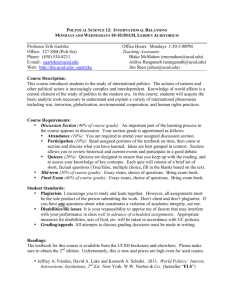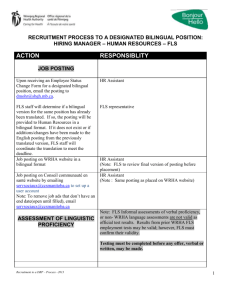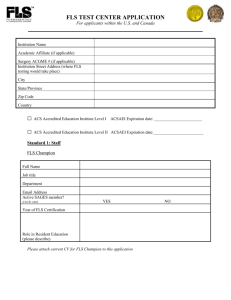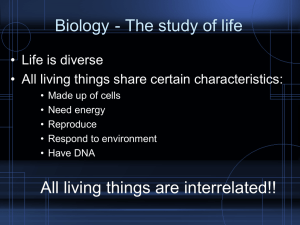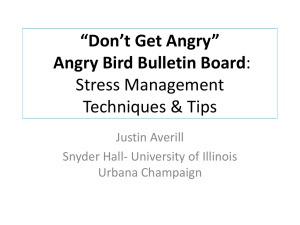ABCDE ,causes and Prevention Cardiac Arrest
advertisement
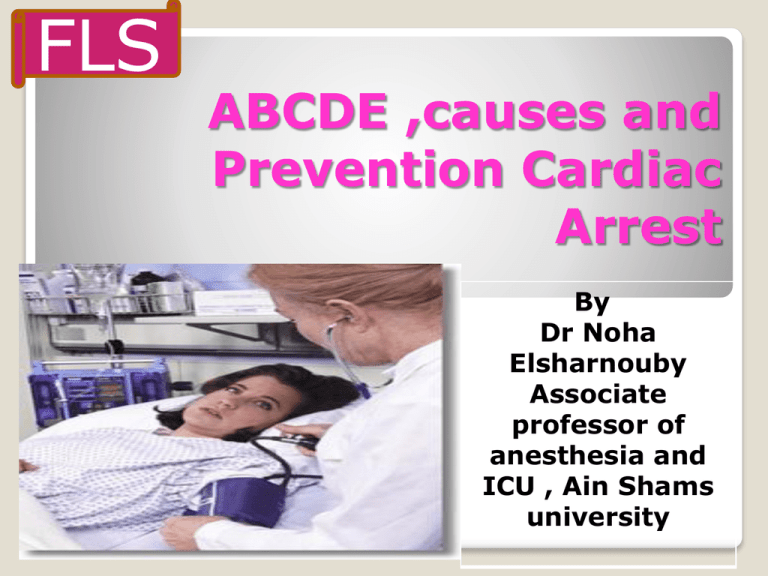
FLS ABCDE ,causes and Prevention Cardiac Arrest By Dr Noha Elsharnouby Associate professor of anesthesia and ICU , Ain Shams university FLS Objectives The causes of cardiorespiratory arrest Identify and managing patients at risk using the ABCDE approach FLS Early recognition of the critically ill patient FLS Recognition of critically ill patients 3 Pulse Systolic BP < 70 mmHg 2 1 < 40 41-50 71-80 Respiratory Rate <8 Temp °C < 35 CNS 0 1 51-100 101-110 111-130 81-100 101-199 35.136.5 2 3 > 130 > 200 9 -14 15-20 36.637.4 > 37.5 A V 21-29 > 30 P U Track score - a score of > 4 triggers a review by doctor FLS Causes of cardiorespiratory arrest Airway Breathing Circulation FLS Causes of cardiorespiratory arrest Airway problems Obstruction caused by: CNS depression Blood Vomit Foreign body Trauma Infection Inflammation Laryngospasm FLS Causes of cardiorespiratory arrest Breathing problems Decreased respiratory drive ◦ CNS depression Decreased respiratory effort ◦ muscle weakness ◦ nerve damage ◦ restrictive chest defect ◦ pain from fractured ribs Lung disorders ◦ pneumothorax ◦ haemothorax ◦ infection ◦ acute exacerbation COPD ◦ asthma ◦ pulmonary embolus ◦ ARDS Global Injury Solutions Global Injury Solutions FLS Causes of cardiorespiratory arrest Circulatory problems Primary Acute coronary syndromes Dysrhythmias Hypertensive heart disease Valve disease Drugs Electrolyte / acid base abnormalities Secondary Hypoxaemia Blood loss Hypothermia Septic shock FLS The ABCDE approach to the critically ill patient A… B… C… D… E… FLS ABCDE approach Rules Call for help early Priority of treatment Complete initial assessment Reassessment safety Patient responsiveness to treatment FLS ABCDE approach Airway Recognition of airway obstruction Talking Difficulty breathing, distressed, choking Shortness of breath Noisy breathing ◦ stridor, wheeze, gurgling See-saw respiratory pattern, accessory muscles A FLS ABCDE Approach Airway Treatment of airway obstruction Oxygen Airway opening - i.e. head tilt, chin lift, jaw thrust Simple adjuncts Advanced techniques - e.g. LMA, tracheal tube A FLS ABCDE approach B Breathing Recognition of breathing problems Look ◦ Inspect respiratory distress, accessory muscles, cyanosis, respiratory rate, chest deformity, conscious level Listen ◦ Auscultate breath sounds, noisy breathing Feel ◦ palpat expansion, percussion, tracheal position Pulse oxymetry FLS ABCDE approach Breathing Treatment of breathing problems Airway Oxygen Treat underlying cause - e.g. drain pneumothorax - e.g . Nebulizers Support breathing if inadequate - e.g. ventilate with bag valve mask B FLS ABCDE approach Circulation Look at the patient Pulse – central pulse (carotid) peripheral pulse Peripheral perfusion capillary refill time ( normally <2 sec) Blood pressure Monitor C FLS ABCDE approach Circulation Treatment Airway, Breathing Oxygen IV access, take blood sample and lab investigations Treat cause Give fluids Haemodynamic monitoring MONA if acute coronary syndrome C ABCDE approach Disability AVPU or GCS? Examination Points Eye opening Spontaneous To speech To pain None 4 3 2 1 Best motor response Obeys commands Localizes Withdraws Abnormal flexion Extends None 6 5 4 3 2 1 Best verbal response Oriented Confused Inappropriate Incomprehensible sounds None 5 4 3 2 1 Total Glasgow Coma Score Best score =15 Worst score =3 Disability Glasgow Coma Score Global Injury Solutions FLS ABCDE approach Disability AVPU or GCS, and pupils Treatment - ABC Treat underlying cause Blood glucose ◦ if < 3 mmol l-1 give glucose D FLS ABCDE approach Exposure Remove clothes to enable examination - e.g. injuries, bleeding, rashes Avoid heat loss Maintain dignity E FLS Any questions FLS Summary Early recognition of patients at risk may prevent cardiorespiratory arrest Airway, breathing or circulation problems can cause cardiorespiratory arrest ABCDE approach to recognise and treat patients at risk of cardiorespiratory arrest
